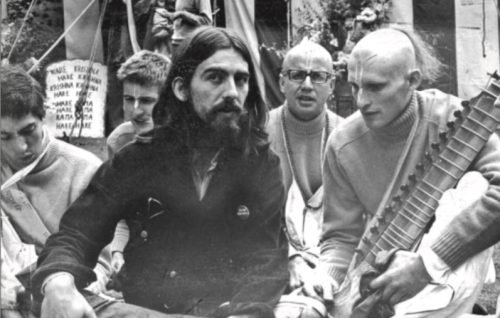George Harrison, the “quiet Beatle,” left an indelible mark on music and culture that transcends his contributions to The Beatles’ legendary discography. Known for his profound lyricism, innovative guitar work, and spiritual depth, Harrison’s influence extended far beyond the boundaries of rock and roll. He was a pioneer in integrating diverse musical traditions and spiritual philosophies into the fabric of Western pop culture, a legacy that continues to resonate today.
Eastern spirituality, encompassing diverse practices and philosophies from regions such as India, China, and Japan, has a rich and ancient history. Central to many Eastern traditions are concepts such as meditation, mindfulness, and the pursuit of inner peace and enlightenment. Historically, these practices were relatively unknown or misunderstood in the West, often perceived as esoteric or exotic.
Growing Curiosity
The 1960s, however, marked a period of significant cultural upheaval and exploration in the West. Amidst the burgeoning counterculture movement, there was a growing curiosity about alternative lifestyles and spiritual practices. It was within this context that George Harrison emerged as a crucial bridge between Eastern mysticism and a Western audience. His journey into Eastern spirituality began with The Beatles’ famous trip to India in 1968, where they studied Transcendental Meditation with Maharishi Mahesh Yogi. This experience profoundly influenced Harrison, sparking a lifelong dedication to Eastern philosophies.
Through his music and public persona, George Harrison introduced millions to the principles of Eastern spirituality. His songs, infused with the sounds of traditional Indian instruments and the teachings of gurus like Ravi Shankar, brought a new dimension to Western pop music. Moreover, his public advocacy for meditation and spiritual exploration challenged and ultimately reshaped Western perceptions of these practices.
Explore how George Harrison’s embrace of Eastern mysticism transformed Western views on spirituality and meditation. By examining his musical innovations, public statements, and cultural impact, we will uncover the ways in which Harrison not only enriched the Western music scene but also fostered a deeper, more widespread appreciation for the wisdom of the East.
The Beatle’s Journey to the East
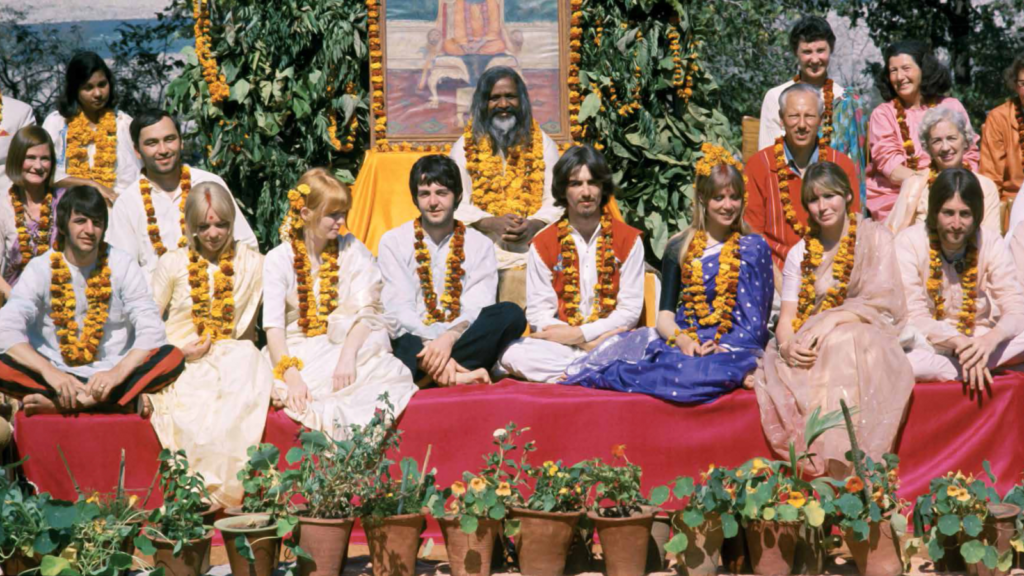
George Harrison, born on February 25, 1943, in Liverpool, England, grew up in a working-class family with a deep love for music. By his teenage years, Harrison had become an accomplished guitarist, heavily influenced by rock and roll pioneers like Chuck Berry and Carl Perkins. In 1958, at the age of 15, he joined a skiffle band called The Quarrymen, which would soon evolve into The Beatles, alongside John Lennon, Paul McCartney, and later Ringo Starr. As The Beatles skyrocketed to global fame in the early 1960s, Harrison’s musical prowess and distinctive style played a crucial role in their unprecedented success.
By the mid-1960s, despite their commercial triumphs, The Beatles were grappling with the pressures of fame and the limitations of their image as mere pop icons. It was during this period of personal and professional searching that Harrison discovered Indian music and culture, largely through the influence of sitar virtuoso Ravi Shankar. Harrison’s fascination with the sitar and Indian classical music culminated in the inclusion of the instrument on the track “Norwegian Wood (This Bird Has Flown)” from the album Rubber Soul, marking one of the earliest instances of a Western pop song incorporating Indian elements.
Harrison’s Spiritual Journey
The Beatles’ trip to India in February 1968 was a pivotal moment in Harrison’s spiritual journey. Invited by Maharishi Mahesh Yogi, the band traveled to Rishikesh to study Transcendental Meditation at the Maharishi’s ashram. This retreat was intended as a respite from their hectic lives and an opportunity to delve into meditation and self-discovery. While the other Beatles eventually grew disillusioned with the experience, Harrison remained deeply committed to the spiritual teachings he encountered.
During their time in India, Harrison’s personal spiritual awakening began to take shape. Immersed in the practices and philosophies of Eastern spirituality, he found a sense of peace and purpose that had eluded him amidst the chaos of Beatlemania. Harrison’s dedication to meditation and his growing interest in Hinduism, particularly the teachings of the Bhagavad Gita, had a profound impact on his worldview. He began to see life through a lens of spiritual inquiry, seeking inner harmony and a connection to the divine.
This spiritual transformation influenced not only Harrison’s music but also his entire approach to life. He started to view fame and material success as fleeting and superficial, prioritizing instead the pursuit of inner peace and spiritual growth. His commitment to these principles became evident in his subsequent work with The Beatles, as well as in his solo career. Songs like “Within You Without You” and “The Inner Light” reflected his deepening engagement with Eastern philosophy and helped introduce these ideas to a Western audience.
Musical Manifestations of Mysticism
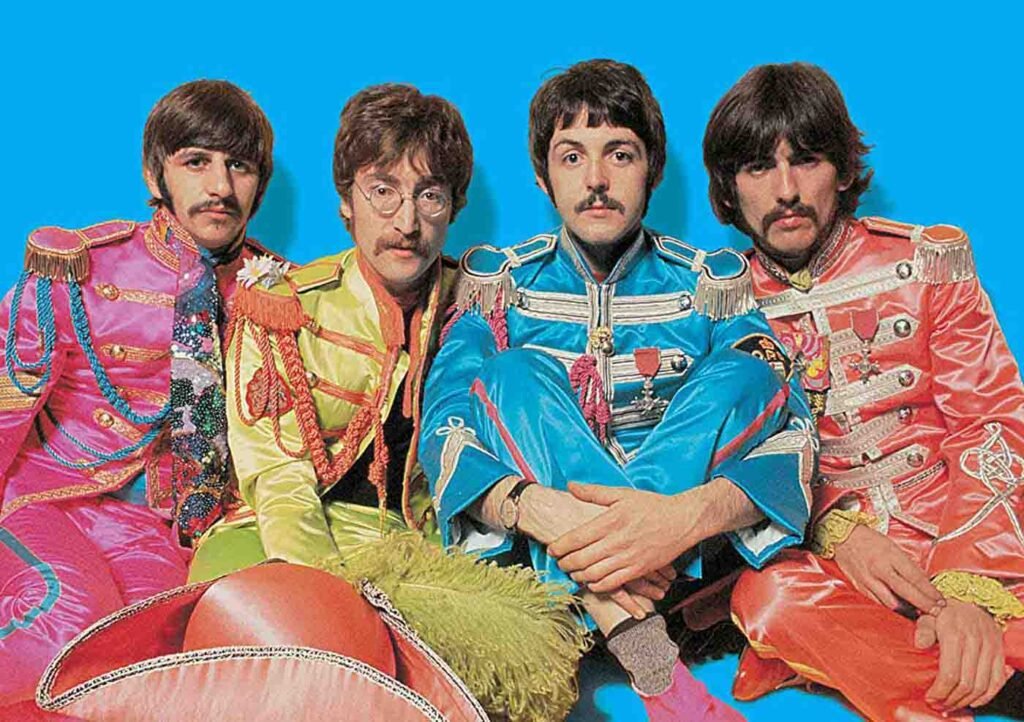
George Harrison’s deep dive into Eastern spirituality left an indelible mark on his music, profoundly shaping his artistic output both with The Beatles and in his solo career. His exploration of Indian music and philosophy is most vividly reflected in several key songs that blend traditional Eastern sounds and spiritual themes, creating a bridge between Western pop and Eastern mysticism.
“Within You Without You”
One of the most notable examples of Harrison’s integration of Eastern spirituality into his music is the song “Within You Without You,” featured on The Beatles’ seminal 1967 album, Sgt. Pepper’s Lonely Hearts Club Band. The song is a meditative piece that diverges sharply from the pop rock conventions of its time.
“Within You Without You” opens with the drone of a tambura, establishing a hypnotic foundation characteristic of Indian classical music. The sitar, played by Harrison, and the tabla, a pair of hand drums, further imbue the track with an authentic Eastern sound. The song’s structure is also influenced by Indian music, eschewing the typical verse-chorus form in favor of a more fluid, raga-like progression.
Lyrically, “Within You Without You” delves into themes of transcendence and interconnectedness, reflecting Harrison’s immersion in Eastern philosophy. Lines like “We were talking about the space between us all / And the people who hide themselves behind a wall of illusion” evoke the Hindu concept of Maya, the illusion of separation and individuality. The song’s message of unity and spiritual awakening resonated with the countercultural movements of the 1960s, inviting listeners to look beyond material concerns and seek deeper, spiritual truths.
“The Inner Light”
Another significant song that showcases Harrison’s Eastern influences is “The Inner Light,” released as the B-side to The Beatles’ 1968 single “Lady Madonna.” Recorded in Bombay (now Mumbai) with Indian musicians, the track features a rich tapestry of traditional instruments, including the sitar, sarod, shehnai, and pakhavaj.
“The Inner Light” is notable for its lyrical content, which directly draws from the Tao Te Ching, an ancient Chinese text. The lyrics, “Without going out of your door / You can know all things on earth,” echo the Taoist philosophy of finding wisdom and enlightenment within oneself, without the need for external validation or exploration. This aligns closely with the meditative practices Harrison embraced, emphasizing inner peace and self-awareness.
Traditional Indian Instruments and Musical Structures
Harrison’s use of traditional Indian instruments like the sitar and tabla was groundbreaking in the context of Western pop music. The sitar, with its complex tonal qualities and distinctive sound, became a hallmark of Harrison’s experimentation. His tutelage under Ravi Shankar, one of India’s most revered musicians, enabled him to incorporate these instruments authentically, rather than superficially.
The tabla, with its intricate rhythms, added a layer of rhythmic complexity to Harrison’s compositions, moving beyond the straightforward beats typical of rock music. These instruments, combined with Harrison’s deep respect for Indian musical traditions, allowed him to create a unique sonic landscape that was both innovative and deeply spiritual.
Lyrical Themes Reflecting Eastern Philosophy
Beyond instrumentation, Harrison’s lyrics often reflected the spiritual and philosophical themes he encountered in Eastern teachings. His songs explored concepts such as the impermanence of life, the illusion of the self, and the pursuit of spiritual enlightenment. In “My Sweet Lord,” for example, Harrison expresses his longing for a direct connection with the divine, blending Christian and Hindu imagery to convey a universal spirituality.
Through his music, George Harrison not only shared his own spiritual journey but also introduced a broader audience to the rich philosophical traditions of the East. His willingness to blend Eastern and Western elements created a new, hybrid musical form that transcended cultural boundaries, inviting listeners to embark on their own paths of spiritual discovery.
Public Persona and Advocacy
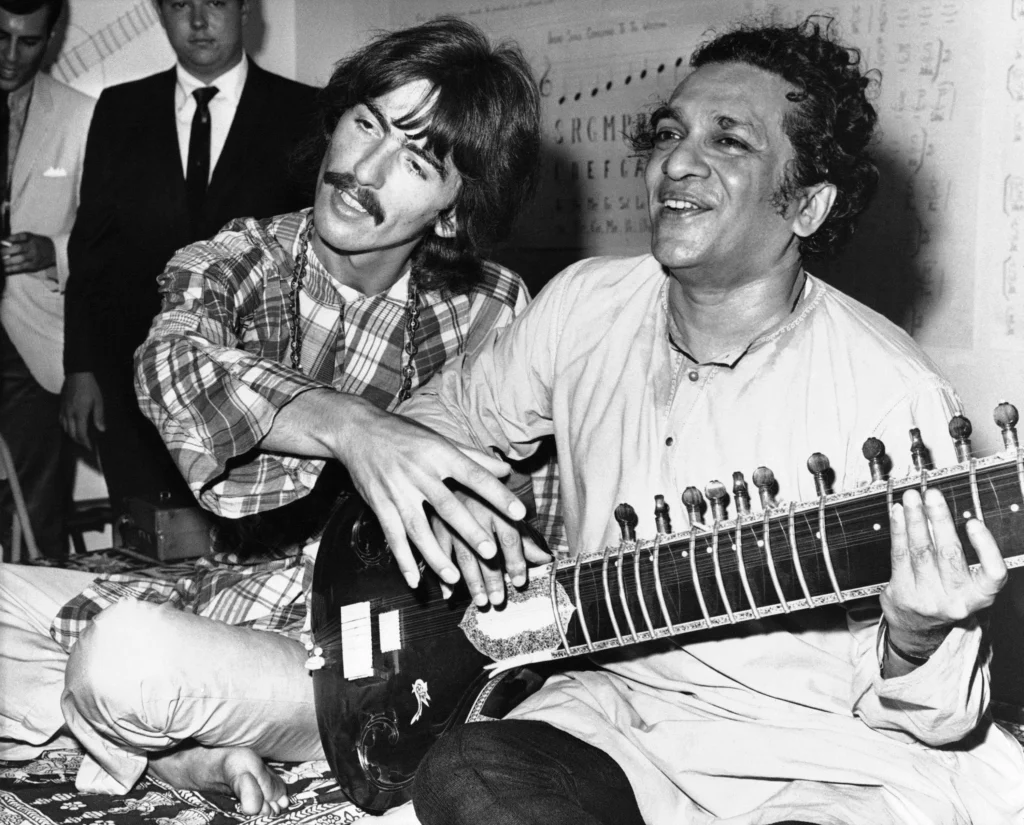
George Harrison’s embrace of Eastern spirituality extended far beyond his music. He became a prominent public advocate for Eastern teachers and practices, using his influence to introduce these concepts to a wider Western audience. Through public endorsements, humanitarian efforts, and media appearances, Harrison’s spiritual journey was a central aspect of his public persona.
Endorsements of Eastern Teachers and Practices
Harrison’s spiritual transformation was deeply influenced by his association with Indian spiritual leaders, most notably Maharishi Mahesh Yogi and Ravi Shankar. Harrison first encountered Maharishi Mahesh Yogi in 1967, and The Beatles’ subsequent trip to Rishikesh in 1968 to study Transcendental Meditation under the Maharishi’s guidance was a significant event in Harrison’s life. Despite The Beatles’ mixed experiences in India, Harrison maintained a lifelong commitment to meditation and often spoke about its benefits in interviews, encouraging his fans to explore this practice.
Ravi Shankar, the renowned sitar maestro, played a pivotal role in Harrison’s spiritual and musical development. Their friendship blossomed into a mentor-disciple relationship, with Shankar introducing Harrison to the deeper aspects of Indian classical music and Hindu philosophy. Harrison’s endorsement of Shankar and his music significantly boosted Shankar’s popularity in the West, leading to greater appreciation of Indian classical music globally.
Concert for Bangladesh and Humanitarian Efforts
Harrison’s spiritual beliefs also manifested in his humanitarian work. In 1971, he organized the Concert for Bangladesh, a pioneering charity event aimed at raising awareness and funds for the refugees of the Bangladesh Liberation War and the catastrophic flooding that had devastated the region. The concert, held at Madison Square Garden in New York City, featured performances by some of the biggest names in music, including Eric Clapton, Bob Dylan, and Ravi Shankar.
The Concert for Bangladesh was groundbreaking, not only because it was one of the first major benefit concerts of its kind but also because it demonstrated how music could be a force for positive social change. Harrison’s motivation for organizing the event stemmed from his deep compassion and his belief in the interconnectedness of all humanity, principles rooted in his spiritual practices. The success of the concert and the subsequent album and film raised millions of dollars for UNICEF and set a precedent for future benefit concerts.
Interviews, Documentaries, and Public Appearances
Throughout his life, Harrison was candid about his spiritual journey in numerous interviews and documentaries. In these appearances, he often discussed his views on life, death, and spirituality, sharing insights from his studies of Hinduism, Buddhism, and other Eastern philosophies.
One of the most notable documentaries featuring Harrison’s spiritual exploration is Martin Scorsese’s George Harrison: Living in the Material World (2011). The film delves into Harrison’s quest for spiritual enlightenment, featuring interviews with his friends, family, and colleagues. It provides a comprehensive look at how his spirituality influenced his music and personal life.
Harrison’s public appearances, whether in support of meditation, humanitarian causes, or simply sharing his music, consistently reflected his spiritual values. He was often seen wearing traditional Indian clothing, and his home in Friar Park was adorned with spiritual symbols and artifacts. These choices underscored his commitment to the spiritual path and his desire to live in harmony with his beliefs.
Critical Perspectives
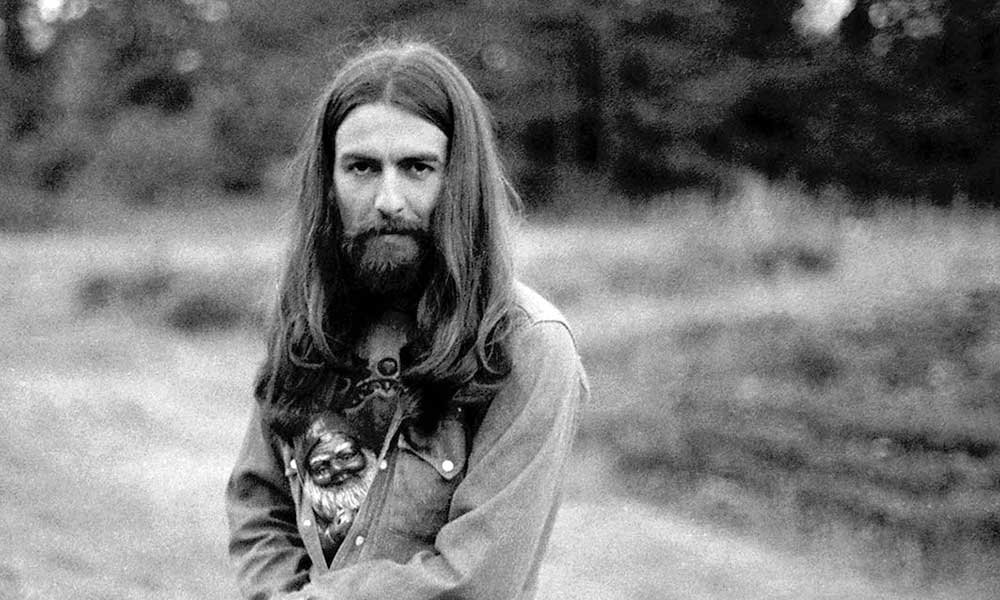
George Harrison’s spiritual pursuits, while widely celebrated, were not without their share of criticisms and controversies. As he navigated the complex terrain of blending Eastern spirituality with Western pop culture, Harrison faced skepticism regarding the authenticity of his spiritual practices and accusations of commercialization. However, many counterarguments and defenses highlight his genuine commitment to his spiritual path, underscoring the depth and sincerity of his journey.
Criticisms and Controversies
Harrison’s foray into Eastern spirituality attracted criticism from various quarters. Some detractors argued that his involvement with Eastern teachers and practices was a form of cultural appropriation. They contended that Harrison and other Western musicians were superficially adopting aspects of Indian culture without fully understanding or respecting their deeper significance.
Additionally, Harrison’s association with Maharishi Mahesh Yogi and the Transcendental Meditation movement was not without controversy. The Beatles’ eventual disillusionment with the Maharishi, fueled by rumors and misunderstandings, cast a shadow over their initial enthusiasm. Critics pointed to these episodes as evidence of the potential pitfalls in the Western embrace of Eastern gurus.
Furthermore, there were concerns about the commercialization of Eastern spirituality. Harrison’s high-profile endorsement of meditation and Hindu philosophy brought these practices into the mainstream, but some argued that this exposure risked diluting their spiritual essence. The commodification of spirituality, where sacred practices were marketed and sold, was seen by some as undermining their true value.
Authenticity and Commercialization
The debate over the authenticity of Harrison’s spiritual pursuits often centers on the broader issue of how Eastern spirituality was integrated into Western culture. Critics have argued that the Western appropriation of Eastern practices often involved a superficial engagement, focused more on exoticism than genuine spiritual exploration.
Commercialization was another significant concern. As Eastern spirituality became fashionable, there was a proliferation of meditation courses, yoga classes, and spiritual retreats, many of which were commodified and stripped of their original cultural context. This trend led to accusations that the spiritual practices Harrison and others popularized were being exploited for profit, rather than being honored as profound philosophical systems.
Counterarguments and Defenses
Despite these criticisms, many counterarguments and defenses underscore the authenticity and sincerity of George Harrison’s spiritual journey. Those close to Harrison, including Ravi Shankar and other spiritual mentors, attested to his genuine commitment to understanding and practicing Eastern spirituality. Harrison’s extensive study of Hindu texts, his lifelong dedication to meditation, and his philanthropic efforts all point to a deep and earnest engagement with his spiritual path.
Harrison’s integration of Eastern spirituality into his life and music was not a passing trend but a profound transformation that influenced his personal and artistic identity. His efforts to share these practices with a wider audience were rooted in a desire to promote peace, compassion, and self-awareness. Far from being superficial, Harrison’s spirituality was a cornerstone of his life, guiding his actions and decisions both in and out of the public eye.
Moreover, the impact of Harrison’s advocacy for Eastern spirituality can be seen in the lasting positive changes it brought about. The widespread acceptance and practice of meditation, yoga, and other Eastern philosophies in the West have contributed to a greater understanding and appreciation of these traditions. While commercialization is a valid concern, the broader cultural shift towards mindfulness and holistic well-being reflects a genuine assimilation of these practices into Western life.
Final Thoughts
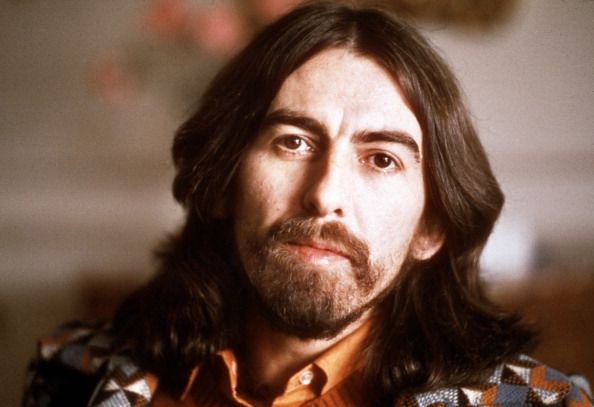
George Harrison’s journey into Eastern spirituality was a transformative odyssey that bridged the gap between Eastern and Western spiritual traditions. As a member of The Beatles and a solo artist, Harrison used his music and public platform to introduce millions to the rich philosophies and practices of the East. His deep engagement with Indian culture and spiritual teachings not only enriched his own life but also significantly influenced Western perceptions of spirituality and meditation.
Harrison’s enduring legacy is evident in both the music he created and the spiritual path he championed. Songs like “Within You Without You” and “The Inner Light” stand as timeless testaments to his ability to seamlessly blend Eastern musical elements and philosophical themes into Western pop music. His public advocacy for meditation, yoga, and the teachings of revered figures like Maharishi Mahesh Yogi and Ravi Shankar brought these practices into the mainstream, fostering a greater appreciation for Eastern wisdom.
Beyond his musical contributions, Harrison’s commitment to humanitarian causes, most notably through the Concert for Bangladesh, demonstrated the profound impact of his spiritual beliefs on his actions. His efforts helped pave the way for future benefit concerts and highlighted the potential for music to serve as a catalyst for positive change.
In contemporary Western culture, the relevance of Eastern mysticism continues to grow. Practices such as meditation and yoga have become integral parts of many people’s lives, valued for their mental, physical, and spiritual benefits. The cultural shift towards mindfulness and holistic well-being can be traced back, in part, to the pioneering work of artists like George Harrison who brought these traditions to a wider audience.
